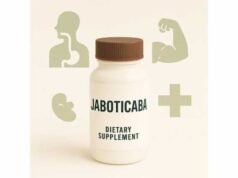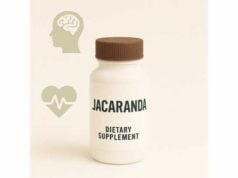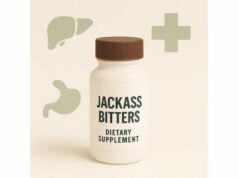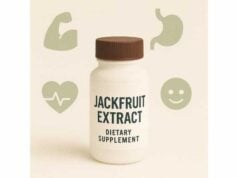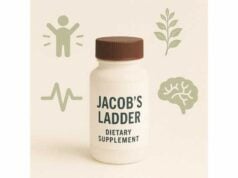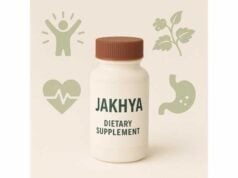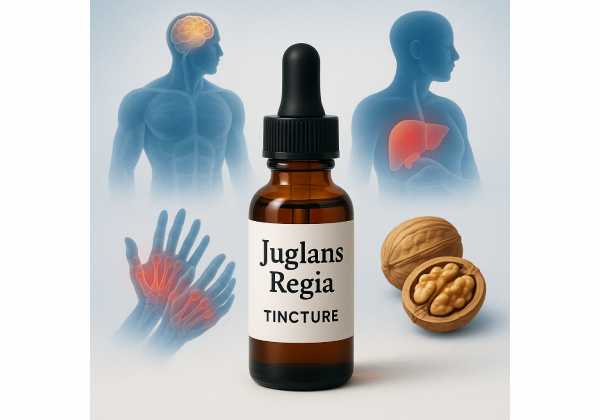
Juglans regia—better known as English walnut—has been used across Europe and Asia for centuries, not only as a food but as a source of botanical remedies made from the leaf, green husk, and bark. A walnut tincture is an alcohol-based extract that concentrates constituents such as polyphenols (including ellagitannins and flavonoids) and the naphthoquinone juglone. Today, people most often reach for Juglans regia tincture for skin and oral applications, to freshen and astringe tissue, and for its broad antimicrobial and antioxidant properties. Yet “walnut” preparations can vary widely depending on which part of the plant is used and how it’s extracted. This guide cuts through the noise with practical, safety-first advice: what the tincture is (and is not), how it appears to work, the clearest use-cases, sensible dosage ranges, and who should avoid it.
Quick Overview
- Topical walnut leaf or husk tinctures may help with minor inflammatory skin conditions and support oral hygiene due to astringent and antimicrobial actions.
- Key actives include juglone and phenolic compounds that show antibacterial, antifungal, and antioxidant effects in laboratory and animal models.
- Typical topical dilution: 2–3 mL tincture (1:5 in 45–70% ethanol) in 100 mL water, applied 1–3 times daily for up to 7 days.
- Safety caveat: internal (oral) medicinal use isn’t well established; topical use should be limited to short courses and avoided on broken skin.
- Avoid if pregnant or breastfeeding, in young children, or if you have nut allergy, severe eczema, or very sensitive skin.
Table of Contents
- What is Juglans regia tincture?
- Does it work: key benefits and active compounds
- How to use it safely at home
- Dosage, preparations and strengths
- Side effects, interactions and who should avoid
- Evidence: what science says today
What is Juglans regia tincture?
Juglans regia tincture is a hydroalcoholic extract made from an English walnut plant part—most often the leaf (Juglandis folium) or green husk (pericarp). Because different tissues contain different profiles of compounds, it’s important to know exactly which part your tincture is made from:
- Leaf tincture: typically richer in tannins, flavonoids (e.g., quercetin, myricetin), and phenolic acids; classically used for minor inflammatory skin conditions and excess perspiration in traditional European practice.
- Green husk tincture: contains phenolic compounds and juglone, contributing to antimicrobial and astringent effects often leveraged in topical or oral-rinse formats.
- Bark or inner bark: sometimes mentioned in historical texts, but modern products are far less common; safety data are sparser.
A tincture is not the same as a capsule or a tea. By definition, tinctures rely on ethanol (commonly 45–70%) to extract alcohol-soluble constituents. The ethanol percentage, plant-to-solvent ratio (e.g., 1:5 means 1 part herb to 5 parts solvent by weight/volume), and the plant part determine the final chemical profile and potency.
A note on names: The term “black walnut tincture” often refers to Juglans nigra (a different species) used in North American folk medicine, frequently for “parasite cleanses.” This article focuses on Juglans regia (English walnut). While both species contain juglone and related phenolics, they’re not interchangeable, and regulatory guidance for J. regia leaf is more clearly defined in Europe for topical indications.
What people use it for today
- Short-term topical support for mild skin irritation (non-broken skin) and excess sweating of hands or feet.
- Oral rinses made from diluted tincture to astringe tissues and support routine oral hygiene.
- Occasional use to reduce malodour due to its astringent and antimicrobial profile.
What it’s not: a cure-all or a substitute for antibiotics when you have a diagnosed infection, nor a proven internal treatment for chronic conditions. Internal medicinal uses are poorly standardized and lack strong clinical outcomes; when in doubt, keep use topical and time-limited, and consult a clinician if symptoms persist.
Does it work: key benefits and active compounds
Walnut tissues concentrate polyphenols (ellagitannins such as tellimagrandin I/II and casuarictin; phenolic acids like gallic and chlorogenic acid), flavonoids (quercetin, myricetin, rutin), and naphthoquinones (notably juglone). Together, these contribute to several plausible actions:
1) Antimicrobial effects (skin and oral contexts)
Extracts from J. regia leaf, pellicle, and green husk have shown broad antibacterial and antifungal activity in laboratory assays. Activity is typically modest compared with prescription agents, but relevant for cosmetic and hygiene support. Juglone, in particular, interferes with bacterial membranes, reduces ATP levels, disrupts biofilms, and can down-regulate virulence factors in organisms like Staphylococcus aureus—mechanisms that align with supportive topical use. In practice, this translates to cleaning, odour control, and mild irritation relief when used appropriately on intact skin or as a diluted mouth rinse.
2) Astringent and tissue-toning actions
Tannin-rich leaf and husk extracts tighten and protect superficial tissues. Users commonly describe a drying feel after application: reduced weeping, less slickness on the skin surface, and transient tightening. This astringency helps explain traditional use for hyperhidrosis (excess sweating) of hands and feet and for minor skin discomforts.
3) Antioxidant capacity
Walnut extracts consistently show free-radical scavenging and metal-chelating abilities in bench assays (DPPH, superoxide), reflecting their phenolic density. Antioxidant effects don’t equal clinical outcomes by themselves, but they support the rationale for short-term topical care when oxidative stress and inflammation contribute to superficial irritation.
4) Anti-inflammatory signaling (preclinical)
Cell and animal studies suggest down-modulation of pro-inflammatory mediators and possible quorum-sensing inhibition in certain bacteria. These lab findings fit with people’s experiential reports of calmer, less irritated skin after short-course use—but they don’t substitute for medical evaluation in conditions like persistent dermatitis, infected wounds, or oral disease.
What to expect
With diluted topical use on intact skin, many notice transient tightening and reduced slickness/odour within minutes. For oral rinses, people often report a “clean” feel and temporary tissue toning. Benefits are supportive, not curative. If redness, pain, discharge, fever, or spreading lesions develop, stop using the tincture and seek care.
How to use it safely at home
Choose the right preparation
- For skin: a leaf or green husk tincture is typical. Ensure the label identifies the plant part (e.g., “Juglans regia leaf, 1:5, 45% ethanol”).
- For mouthwash: many prefer leaf tinctures for a milder profile; green husk extracts can be more staining and more astringent.
Patch test first
- Dilute a few drops of tincture into water as you plan to use it (see dilution guidance below).
- Apply a small amount to the inner forearm once daily for 2 days.
- If burning, rash, or intense dryness occurs, discontinue.
Topical application (intact skin only)
- Clean and dry the area.
- Apply a diluted solution (never full-strength) with a cotton pad or spray.
- Let dry and do not occlude with airtight dressings.
- Limit use to 1–3 times daily for up to 7 days, then pause. If symptoms persist, see a clinician.
Oral rinse (do not swallow)
- Use as a diluted mouthwash once or twice daily for 5–7 days to freshen the mouth and astringe tissues.
- Swish for 20–30 seconds and spit out; rinse with plain water afterward if the astringency is uncomfortable.
- Avoid if you have oral ulcers, active bleeding gums, or if a dentist has advised against astringent rinses.
Stain awareness
- Green husk–rich tinctures can stain teeth, skin, nails, clothing, and countertops. Use dark towels, rinse sinks promptly, and keep away from porous surfaces.
Storage
- Keep tightly capped, away from heat and light. Properly made tinctures are shelf-stable for years, but check the expiry date and discard if the odour becomes rancid or the liquid separates abnormally.
When to see a professional
- Persistent or worsening symptoms after 7 days.
- Signs of infection (spreading redness, warmth, pus, fever).
- Oral lesions lasting more than two weeks.
- You’re pregnant, breastfeeding, taking multiple medications, or have chronic dermatologic or oral conditions.
Dosage, preparations and strengths
Key variables that affect dosing
- Plant part: leaf vs green husk vs mixed parts.
- Strength (ratio): e.g., 1:5 (1 g dried herb per 5 mL solvent) vs 1:2 for stronger, fresh-plant tinctures.
- Solvent: ethanol concentration (commonly 45–70%); higher ethanol extracts more resinous constituents and can feel “hotter” on sensitive tissues.
- Route: topical on intact skin vs oral rinse. Internal medicinal dosing is not well standardized for J. regia tinctures and is generally not recommended without practitioner oversight.
Topical dilution examples (adults)
- Skin application (intact skin):
- 2–3 mL of tincture (1:5 in 45–70% ethanol) in 100 mL of cool sterile or previously boiled, cooled water (≈2–3% v/v).
- Apply 1–3 times per day for up to 7 days.
- For very oily, non-sensitive skin on palms/soles, some tolerate up to 5 mL/100 mL (≈5% v/v), but start low and increase only if needed.
- Foot or hand soaks for excess perspiration:
- Add 5–10 mL tincture to 500 mL of warm water (≈1–2% v/v).
- Soak for 10–15 minutes, up to once daily for 5–7 days.
- Oral rinse (do not swallow):
- 1 mL tincture in 100 mL water (≈1% v/v).
- Swish 20–30 seconds, spit. Use once or twice daily for up to 7 days.
Homemade vs commercial
- Commercial tinctures provide standardized labels (plant part, ratio, solvent) and dropper tops that simplify dosing.
- Homemade extracts can vary. If you prepare your own, record the ratio and ethanol strength. Use food-grade ethanol and clean equipment. Discard any extract that shows mold, separation, or off-odours.
Why limit to short courses?
Short courses minimize irritant and sensitization risks from tannins and juglone and align with traditional European practice for leaf preparations. If you need frequent or long-term support (e.g., chronic hyperhidrosis), speak with a clinician about safer, better-studied options.
Children and older adults
- Children: Avoid tincture use unless a pediatric clinician familiar with herbal products specifically recommends it. Ethanol content and skin sensitivity are concerns.
- Older adults: Skin is thinner and drier; use lower dilutions and shorter courses.
Side effects, interactions and who should avoid
Common, usually mild (with diluted topical use)
- Dryness, tightness, or stinging at the application site—particularly with higher ethanol or higher tannin content.
- Temporary staining (greenish-brown) of skin, nails, and fabrics from green husk–rich tinctures.
Less common
- Irritant contact dermatitis or allergic reactions (itching, redness, hives). Stop use and wash the area; seek care if symptoms persist.
- Mucosal irritation with overly concentrated oral rinses. Always dilute thoroughly and do not swallow.
Serious but rare (primarily with inappropriate use or high exposure)
- Cytotoxic and mutagenic concerns relate largely to juglone at higher concentrations in laboratory systems. While brief, diluted topical use is unlikely to approach such levels, this is a key reason to avoid prolonged or undiluted exposure and to keep use time-limited.
- Stomatitis or worsening skin conditions if used on broken skin, active dermatitis, or infected lesions.
Interactions
- With proper topical use, systemic interactions are unlikely. Still, avoid combining with other strong astringents or irritants on the same area (e.g., undiluted essential oils, high-alcohol toners, aggressive keratolytics).
- If you take medications where mucosal dryness is problematic (e.g., certain anticholinergics), be conservative with astringent oral rinses.
Who should avoid
- Pregnant or breastfeeding individuals (insufficient safety data; avoid).
- Children and infants (avoid unless medically advised).
- Nut allergy or known sensitivity to walnut leaf or husk preparations.
- Active dermatitis, eczema flares, or open/broken skin in the area you intend to treat.
- Chronic oral conditions (periodontal disease, mucositis) unless your dentist or clinician approves a short trial.
When to stop immediately
- Burning, swelling, blistering, or rash at the application site.
- Oral pain, ulcers, or bleeding following a rinse.
- Any systemic symptoms (wheezing, facial swelling)—seek urgent care.
Evidence: what science says today
Where the evidence is strongest
- Topical, short-term use of walnut leaf fits traditional European indications for minor inflammatory skin conditions and excess perspiration of hands and feet. This reflects long-standing practice supported by safety-minded regulatory monographs and the known astringent and antimicrobial chemistry of the plant parts used.
Mechanistic and preclinical support
- Antimicrobial: Multiple in vitro papers report activity of J. regia extracts against bacteria and fungi relevant to superficial skin and oral ecology. Juglone specifically disrupts bacterial membranes, reduces biofilm formation, and attenuates virulence factors in S. aureus models; animal wound experiments show reduced bacterial load and faster closure versus controls.
- Antioxidant/anti-inflammatory: Walnut extracts demonstrate robust free-radical scavenging and can modulate inflammatory mediators in cell systems. These effects align with the calming people often feel on irritated skin after short courses.
Where the evidence is limited
- Human clinical trials for walnut leaf or husk tinctures in dermatology or dentistry are scarce. Most evidence comes from bench and animal work or from traditional use frameworks.
- Internal medicinal use of J. regia tincture lacks standardized protocols, clinically verified dosing, or safety margins. Where internal benefits are claimed (e.g., digestion, “detox,” antiparasitic uses), the data are either absent, extrapolated from other walnut species, or limited to preclinical contexts.
Safety nuance: juglone
- Juglone is both a useful antimicrobial and a reactive quinone. At higher concentrations or with prolonged exposure, it shows cytotoxic and mutagenic effects in laboratory systems. This duality reinforces a conservative approach: dilute, short-term, topical use on intact skin, and avoid internal self-medication.
Bottom line
If your goal is a brief, supportive topical measure for minor skin annoyance or a short course oral rinse to freshen and astringe, a well-labeled Juglans regia leaf or green husk tincture used diluted and time-limited can make sense. For persistent or complex conditions, prioritize clinician-directed care and proven therapies.
References
- Community herbal monograph on Juglans regia L., folium 2013 (Guideline)
- A comprehensive review on ethnobotanical, medicinal and nutritional potential of walnut (Juglans regia L.) 2022 (Systematic Review)
- Antimicrobial, Antioxidant, and Cytotoxic Activities of Juglans regia L. Pellicle Extract 2021
- Antibacterial Activity of Juglone Revealed in a Wound Model of Staphylococcus aureus Infection 2023
- Cytotoxic and Mutagenic Potential of Juglone 2020
Disclaimer
This article provides general information for educational purposes and does not substitute for personalized medical advice, diagnosis, or treatment. Herbal preparations can interact with health conditions and medications and may not be appropriate for everyone. Do not use Juglans regia tincture on broken skin or for longer than one week without professional guidance. If symptoms persist or worsen, consult a qualified healthcare professional.
If you found this guide useful, please consider sharing it on Facebook, X (formerly Twitter), or your preferred platform—and follow us for more evidence-informed natural health explainers. Your support helps us continue creating quality content.

